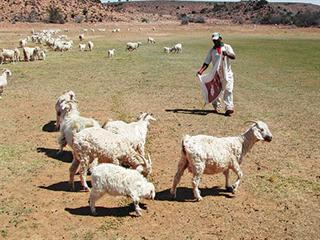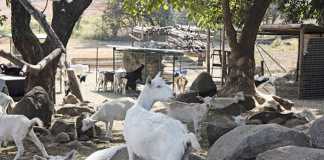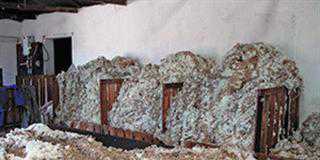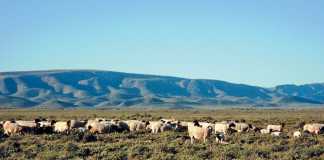
Veld has to be managed to maintain plant composition and cover and to supply nutrition, especially at critical times in the ewes’ production and reproduction cycles. Veld is the cheapest source of feed and is easier to manage than pastures but supplementary feeding should be part of fodder flow planning.
Feeding goats more than that what they can obtain from the veld is often necessary during drought, and in winter, when grass, while providing fibre, loses its feeding value and deciduous trees drop their leaves. There’s no such thing as cheap feed. Balance the cost of supplementary feed against what you could lose by allowing ewes, rams, young goats and kids to go hungry.
Making feed go further
The best strategy when cost is a problem is to keep fewer animals. In this way, you can stretch the natural feed supply to delay the day you have to start feeding. Goats are browsers and seldom need extra feed if enough trees and shrubs with green leaves, pods, flowers and twigs are available. In a dry period, sell surplus stock such as old ewes as soon as possible. This means that you can spend money on feeding the animals that give the best return – productive ewes and their kids.
Goats eat almost any type of supplementary feed, graze on stubble and forage on crop residue. Lucerne hay and pellets are popular because they provide bulk. Drought-resistant crops, such as old man saltbush or cactus pear, are also good, especially with the cut-and-carry method. This method involves harvesting the material and feeding the goats in a pen before letting them out to forage for the rest of the day.
The less goats walk during a drought, the less energy they use up. Build pens on hard, slightly sloping land, keep them dry and provide shade. Another good idea if feed and money are in short supply is to feed only the kids, using a creep to exclude larger goats.
Specific shortages
Supplementation means supplying a small quantity of concentrated feed to compensate for shortages in the available grazing. When giving a lick supplement on the veld, enough grazing must be available, as most animals take in at least 3% of their body weight in dry feed daily. Place the lick away from the nearest watering points to encourage the animals to move out into the veld instead of lying around the feeding area.
Because South Africa has so many veld types, each with its own specific shortages of phosphate or certain trace minerals, base your decision on the type of supplements to buy for any season or purpose on the advice of a feed consultant or company. Once you start feeding, you can’t stop until it rains, and that’s highly unpredictable during a drought.
Buying in feed
Unless your farm lies in a high rainfall area, or has plenty of good quality irrigation water, it might be better to buy in feed rather than to produce your own. Feed companies manufacture convenient, ready-mixed, balanced licks, pellets and blocks. At a cost of about R1/ animal/ day, this has advantages over self-produced feed. Buying feed on an as-needed basis saves you the expense of machinery, fertilisers, pesticides and labour.
When to feed
Start feeding when animals have lost about 15% of their normal body weight but before they become weak. Don’t feed all the animals. Where feed is scarce, focus on ewes with kids, heavily pregnant ewes and young replacement ewes. In the veld, feed dry animals two or three times a week and pregnant ewes or mothers every day. Dry animals such as kapaters recover well after a drought but it might be better to sell them before you have to start feeding them. Don’t stop feeding too soon after rain. Young, green grass is short in energy, and this can lead to losses in drought-stressed animals.
Roelof Bezuidenhout is a freelance agricultural writer and a fourth-generation Karoo small-stock farmer specialising in Merino and Dorper sheep and Angora goats.













